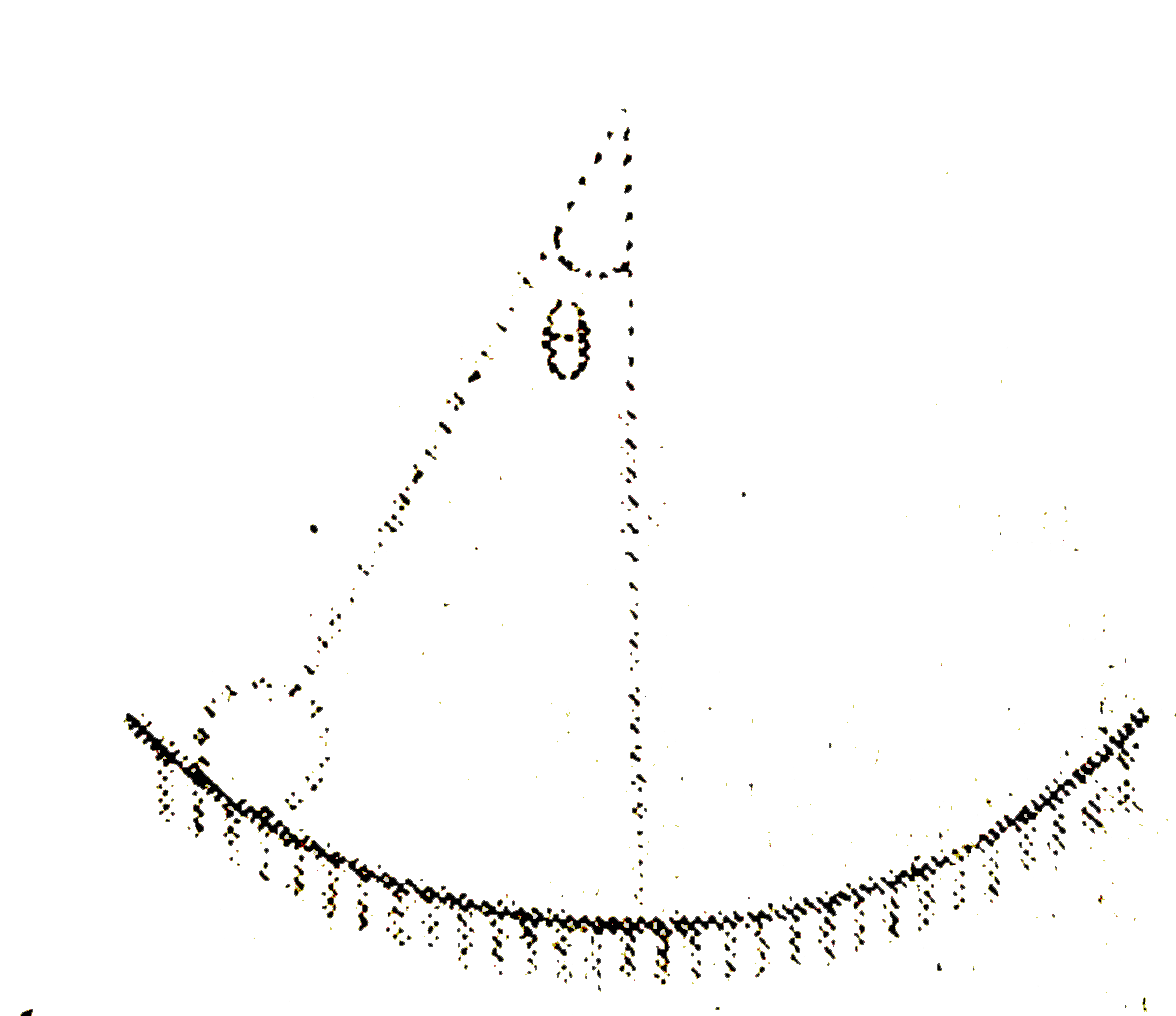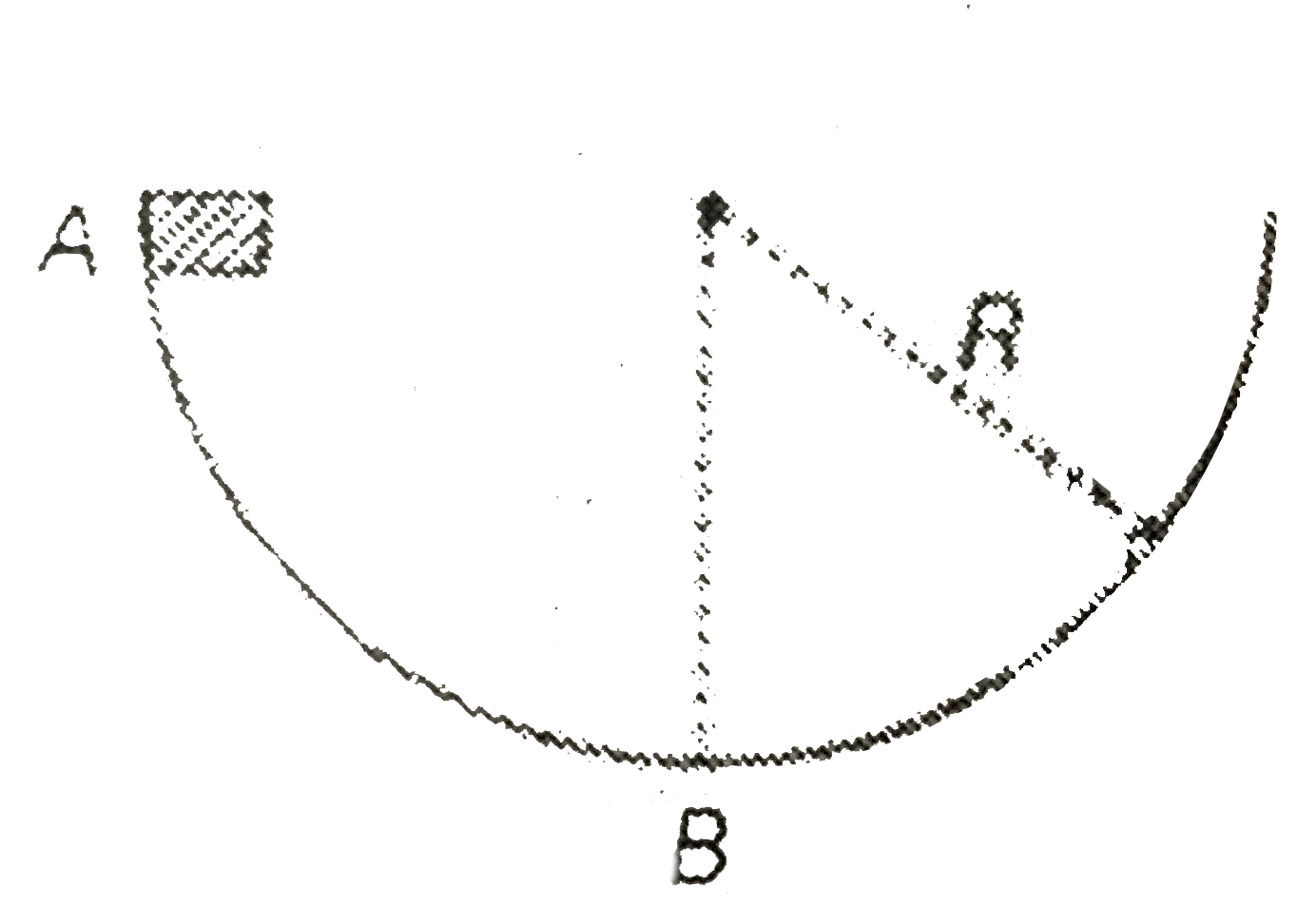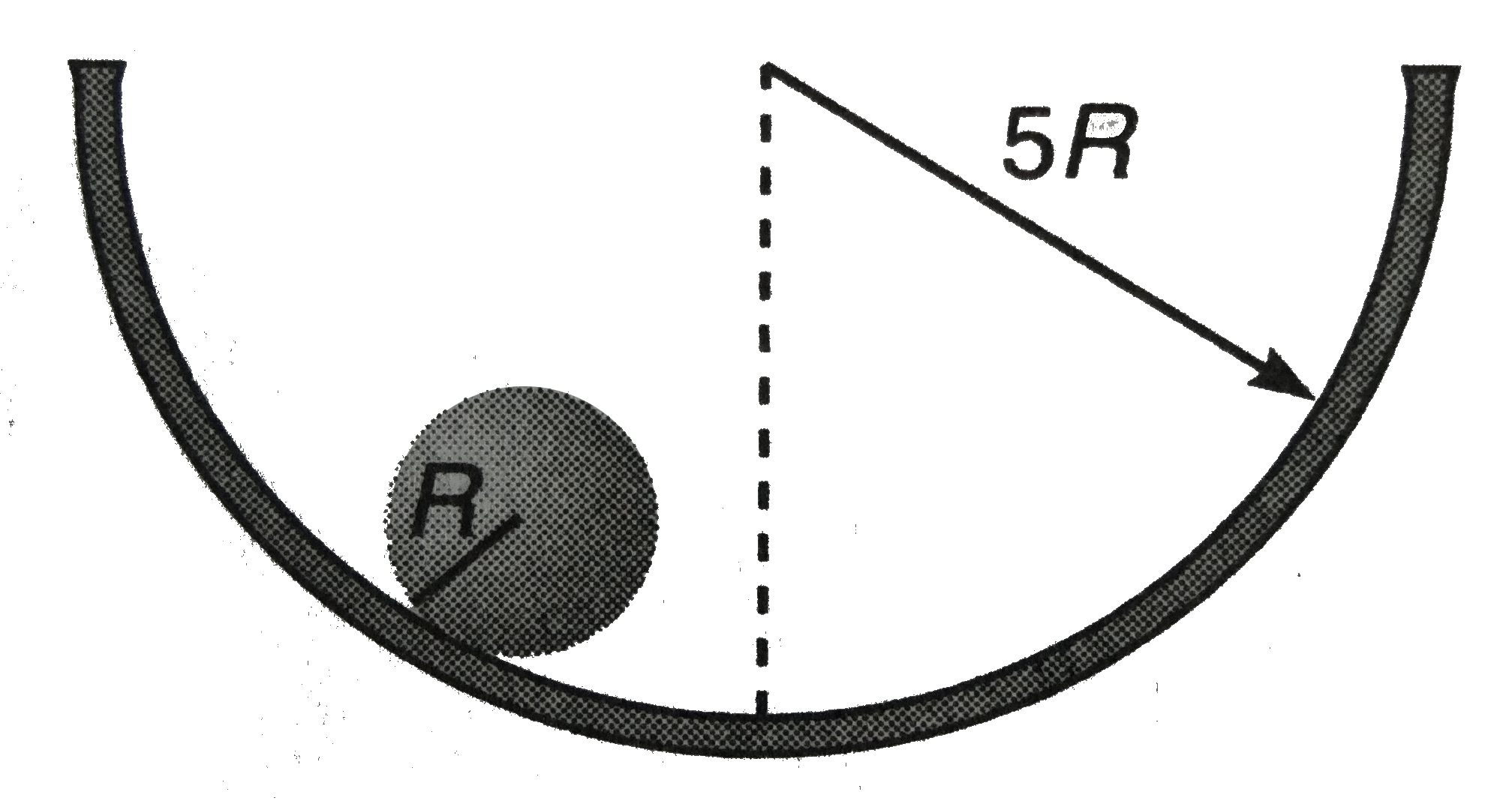A small ball of radius r rolls without sliding in a big hemispherical bowl. of radius R. what would be the ratio of the translational and rotaional kinetic energies at the bottom of the bowl.
2:1
3:2
4:3
5:2
The correct Answer is:D
To solve the problem of finding the ratio of translational and rotational kinetic energies of a small ball rolling without slipping in a big hemispherical bowl, we can follow these steps:
1. Identify the Kinetic Energies:
- The translational kinetic energy (TKE) of the ball is given by:
TKE=12mv2
- The rotational kinetic energy (RKE) of the ball is given by:
RKE=12Iω2
where I is the moment of inertia of the ball and ω is the angular velocity.
2. Moment of Inertia:
- For a solid sphere, the moment of inertia I is:
I=25mr2
3. Relation between Linear and Angular Velocity:
- Since the ball rolls without slipping, the relationship between the linear velocity v and the angular velocity ω is:
v=rω⇒ω=vr
4. Substituting ω in RKE:
- Substitute ω in the expression for RKE:
RKE=12Iω2=12(25mr2)(vr)2
- Simplifying this gives:
RKE=12⋅25mr2⋅v2r2=15mv2
5. Finding the Ratio of TKE to RKE:
- Now, we can find the ratio of translational kinetic energy to rotational kinetic energy:
Ratio=TKERKE=12mv215mv2
- The mv2 terms cancel out:
Ratio=1215=12⋅51=52
6. Final Result:
- Therefore, the ratio of translational kinetic energy to rotational kinetic energy at the bottom of the bowl is:
TKERKE=52
- The translational kinetic energy (TKE) of the ball is given by:
TKE=12mv2
- The rotational kinetic energy (RKE) of the ball is given by:
RKE=12Iω2
where I is the moment of inertia of the ball and ω is the angular velocity.
- For a solid sphere, the moment of inertia I is:
I=25mr2
- Since the ball rolls without slipping, the relationship between the linear velocity v and the angular velocity ω is:
v=rω⇒ω=vr
- Substitute ω in the expression for RKE:
RKE=12Iω2=12(25mr2)(vr)2
- Simplifying this gives:
RKE=12⋅25mr2⋅v2r2=15mv2
- Now, we can find the ratio of translational kinetic energy to rotational kinetic energy:
Ratio=TKERKE=12mv215mv2
- The mv2 terms cancel out:
Ratio=1215=12⋅51=52
- Therefore, the ratio of translational kinetic energy to rotational kinetic energy at the bottom of the bowl is:
TKERKE=52
Topper's Solved these Questions
- SYSTEM OF PARTICLES AND ROTATIONAL MOTIONBOOK - VMC MODULES ENGLISHCHAPTER - SYSTEM OF PARTICLES AND ROTATIONAL MOTIONEXERCISE - EFFICIENT
50 Videos
- SYSTEM OF PARTICLES AND ROTATIONAL MOTIONBOOK - VMC MODULES ENGLISHCHAPTER - SYSTEM OF PARTICLES AND ROTATIONAL MOTIONEXERCISE - IMPECCABLE
56 Videos
- SYSTEM OF PARTICLES AND ROTATIONAL MOTIONBOOK - VMC MODULES ENGLISHCHAPTER - SYSTEM OF PARTICLES AND ROTATIONAL MOTIONEXERCISE - IMPECCABLE
56 Videos
- SYSTEM OF A PARTICLES & ROTATIONAL MOTIONBOOK - VMC MODULES ENGLISHCHAPTER - SYSTEM OF A PARTICLES & ROTATIONAL MOTIONEXERCISE - IN-CHAPTER EXERCISE F
10 Videos
- UNITS, MEASUREMENTS & ERRORSBOOK - VMC MODULES ENGLISHCHAPTER - UNITS, MEASUREMENTS & ERRORSEXERCISE - IN - CHAPTER EXERCISE - B
10 Videos
Similar Questions
A hemispherical bowl has a radius of 3.5 cm. What would be the volume of water it would contain?
View SolutionA disc is rolling on a surface without slipping. What is the ratio of its translational to rotational kinetic energies ?
View SolutionA ring is rolling without slipping. The ratio of translational kinetic energy to rotational kinetic energy is
View SolutionA hollow sphere is rolling without slipping on a rough surface. The ratio of translational kinetic energy to rotational kinetic energy is
View SolutionA ring of mass m and radius r rolls without slipping on a fixed hemispherical surface of radius R as shown. The time period of small oscillations of ring is 2π√n(R−r)3g then find the value of n.

View SolutionA small ball is pushed from a height h along a smooth hemispherical bowl of radius R. With what speed should the ball be pushed so that it just reaches the top of the opposite end of the bowl?
View SolutionA small block of mass m is released from rest from position A inside a smooth hemispherical bowl of radius R as shown in figure Choose the wrong option.

View SolutionA solid sphere is rolling without slipping on a horizontal plane. The ratio of its rotational kinetic energy and translational kinetic energy is
View SolutionA uniform thin spherical shell of mass m and radius R rolls down without slipping over an inclined plane of angle θ with the horizontal. The ratio of rotational kinetic energy to the total kinetic energy of the shell will be
View SolutionA solid sphere (radius=R) rolls without slipping in a cylindrical throuh(radius=5R). Findthe time period of small oscillations.

View Solution
